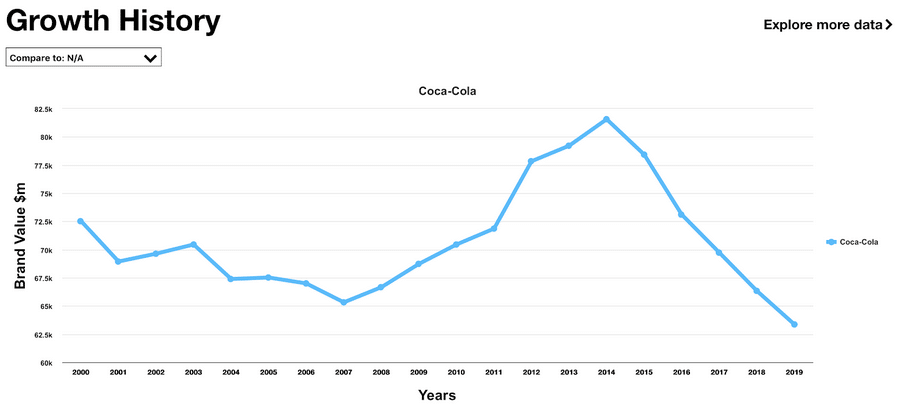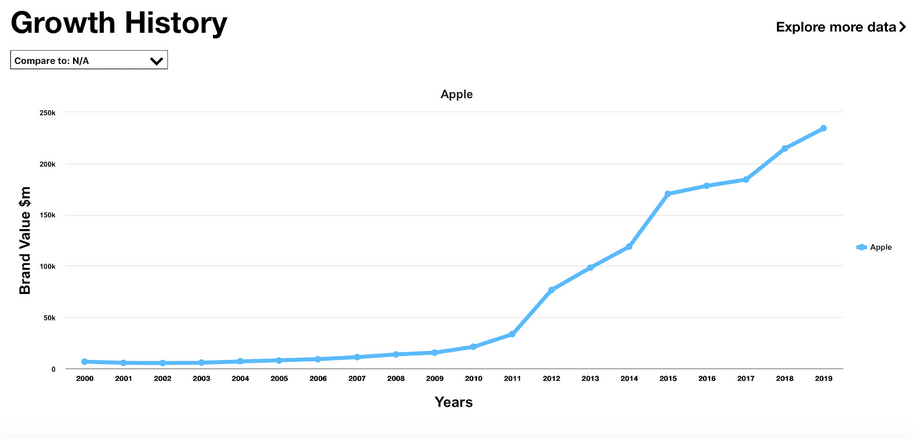The Importance of Advertising and Why You Should Advertise
As more brands continue to enter the market, businesses are starting to struggle for the attention of their target audience with consumers having more options.
So, why is advertising important when this happens?
Simply put, the average person sees at least 5,000 ads per day which means that it is entirely possible for your brand’s advertisements to reach out to a large audience while conveying the unique selling points of your products or businesses in just a few minutes or even seconds.
Whether you are advertising for your start-up or for the company you’re working for, one simply can’t deny that advertising has grown to be an essential aspect of every business.
However, advertising has more benefits than you think. By the end of this article, you will be able to find out more about how advertising affects your business and helps you to achieve your organisational goals.
Running your first digital advertising campaign? Our Digital Advertising Strategy Guide might be of help.
Awareness

Image by George Clerk via GettyImages
Ever wondered how many advertisements you’ve seen in a day?
Studies made by the market research firm, Yankelovich, in 2007 have shown that an average person would have seen at least 5,000 advertisements in just one day.
Just imagine the number of advertisements that one has come across in their lifetime.
Reaching Out to a Large Audience
Be it through the internet, print, broadcast, or outdoor media, those advertisements that you have seen are efforts made by companies to increase their brand awareness and entice consumers to purchase their products.
As advertising enables businesses to reach out to a large amount of audience, more consumers are able to discover the products and services that your company offers while understanding the key features of it within a few minutes or even seconds.
Everyone should know that a consumer’s wants and needs are constantly changing and, by advertising about one’s business, it raises the awareness of their brand and may even uncover a potential audience group one day.
Penetrate into New Markets
Last but not least, as a startup or new business, one can only rely on advertising to drive awareness and reach out to their target audience. Not only is it a life-saver for many new businesses; advertising also helps businesses that have been running for years to reach out to a new market segment that they haven’t been able to penetrate.
For example, your customer wants to look for home decor ideas with no intention to buy anything yet. The main purpose of advertising during this stage is not to make a sale but rather to raise awareness about the products that you are able to provide to satisfy their needs.
Content Distribution
When you are thinking of launching a new product, an upcoming promotion, or raising awareness about the products or services that your company has to offer to the end-user, have you ever thought about advertising?
Advertising not only is the fastest way to accurately convey the information of a product to a customer, but it also enables your company to have control over the modes of distribution which is categorised into three broad categories — Paid, Owned, and Earned media. It is also the only medium that a business has complete control over when they want to get their message across at the right time.
Since advertising allows one to gain control over the modes of distribution, it would be easier for the brand guidelines of the company to be incorporated into the design of the advertisement.
Differentiation from Competitors

Image from www.pexels.com
In this day and age, consumers are exposed to many options when it comes to decision making and the content of a business’s advertisements may or may not be the deciding factor of the consumer when they are at the ‘Evaluation of Alternatives’ stage of the consumer decision-making process which was first introduced by John Dewey in 1910.
The Importance of Advertising
Also known as the consideration stage of a consumer decision-making process, this is where consumers compare the options available based on objective and subjective characteristics to determine which of the options best suit their needs.
But why does advertising play such an important role when it comes to the ‘Evaluation of Alternatives’ stage in a consumer’s decision-making process’?
Here’s a quick question, would you rather buy from brand A who has advertised about how effective their laundry detergent is at removing stains from clothes or brand B that has no advertisements and you have zero ideas about the key features of the product?
Showcase Your Value Proposition
Advertising is important as it enables brands to display the unique selling points of their products and services in a few minutes or even seconds. It also allows a brand to establish a brand positioning in the minds of their target consumers while associating their brand with an idea or category that they want their consumers to remember them as.
Lastly, the advertisements rolled out by one’s company also invites their target consumers to do a comparison between their brand and their competitors before the consumer decides on which brand they would like to purchase from.
Customer Segmentation and Profiling
Why is segmentation so crucial?
By segmenting your customers, you are grouping them according to the various criteria – demographics and media usage. It is one of the most crucial things in digital advertising due to the fact that digital advertisers segment customers as part of their targeted marketing strategy.
Another reason why customer segmentation is key is that customers are very empowered in this day and age and as compared to before, purchasing decisions are made very efficiently. To understand how you can hook your customers in their buying decision process, you have to first understand the behaviour and thoughts of your customers.
Know Your Customers
To kickstart your audience segmentation, you can first look at the past purchasing behaviours of your target customers and segment them based on their buying patterns and products they’re purchasing. By doing so, you will be able to foresee what the customer needs and show it to them before they even realise it.
Following past purchasing behaviours would be to keep a lookout for the key social channels that your consumers use. Through understanding how consumers absorb your content, your brand will be able to catch their preferences and it would definitely be of help in the long run as you’d know how to advertise your products and services to different groups of audiences.
Psychographic Segmentation
Finally, you can segment them based on their psychographics. Psychographic segmentation is where consumers are differentiated based on their lifestyle, culture, or traits. This type of segmentation requires one to do more research because as compared to the demographic and geographic segmentation, the psychographic segmentation does not have data that is as clear and concrete.
This is where you can incorporate polls, quizzes, or even surveys to find out exactly what a consumer is looking for and use that information to advertise to the right audience.
Tip: Create a buyer persona to help provide your organisation with a detailed analysis of what your customers’ needs and wants are. Check out our detailed guide on buyer personas and how to create one.
Brand Equity

Image from www.pexels.com
As quoted by Steve Jobs, “To me, marketing is about values. This is a very complicated world, it’s a very noisy world. And we’re not going to get the chance to get people to remember much about us. No company is. So we have to be really clear about what we want them to know about.”

Get Your Message Across
One thing for sure is that advertising gives every business a chance to convey a message of how they want people to perceive their brand. A good image is created when a business successfully gets people to spread positive word-of-mouth because it builds credibility around the brand and increases consumers’ trust towards it.
Advertising also creates mindshare which would eventually be of value to your brand and lead to high brand equity in the long run. If you want to gauge the popularity and awareness of your products, this is where mindshare gets involved. Defined as the amount of consumer awareness or reputation of your brand or organisation, Mindshare is measured by the extent of mentions by the public or the media.
Some examples of brands with mindshare and high brand equity would be Coca-Cola and Apple as evident from their brand value over the years.
Case Study #1: Coca-Cola
Over the years, Coca-Cola has used advertising to make people perceive them as a brand that is fun and happy. The largest advertising campaign of Coca-Cola was the 2014 FIFA World Cup campaign, ‘The World’s Cup’ where they featured a series of events like unveiling the photomosaic that they’ve created at the start of the games, to holding the FIFA World Cup Trophy Tour across 90 countries (“Coca-Cola Invites the World to the Opening Match of the 2014 FIFA World Cup™ with Unveil of ‘The Happiness Flag’”, 2014).

Screenshot from interbrand.com
They were successful in using the 2014 FIFA World Cup as leverage to advertise their brand and increase brand equity as evident from their brand value where it peaked at an all-time high of $81 Million, ranking 3rd on the Interbrand Best Global Brands in 2014 (“Best Brands – Interbrand”, 2019). However, as they cut down on advertising in recent years, their brand value as of 2019 was $63 Million.
Case Study #2: Apple
On the other hand, Apple’s brand value has been constantly on the rise over the past 10 years and ranked first on Interbrand Best Global Brands in 2019 with a brand value of $234 Million.

Screenshot from interbrand.com
Other than using product placements in TV shows, one other way that Apple advertises their brand is through its annual keynote speeches where it generates buzz about their newest products. By generating buzz, it means that there would be word-of-mouth marketing involved, and this form of marketing as mentioned earlier helps to build the credibility of the brand as well as a consumers’ trust towards it (Smith, 2017).
Increase Sales – Return of Investment

Image by Nora Carol via GettyImages
As compared to those who cut advertising, it’s proven by a survey of more than 3,000 companies over a five-year period that constant advertising efforts have been proven to increase the sales of companies by an average of 100 percent. (Hobbs, 2016)
As mentioned earlier in the point about differentiation from customers, in the ‘Evaluation of Alternatives’ stage in a consumers’ decision-making process, advertisements enable consumers to do a brand comparison and also find out more about the key features of the brand. It helps the consumer to decide what they want and to also find out whether the brand can satisfy their needs.
In the event where your sales team gets involved, they could also make use of the advertisements and leverage sales as the consumers would be easier to convince since they have already been exposed to a certain degree of information. If the sale of a product or service is successful, it would also boost your sales team’s morale.
Create Desire (Wants)
Do you really need the latest product on the market? Or was it just a trap set by the companies behind those advertisements you came across before purchasing the product?
Businesses are smart to use emotional appeal and storytelling in advertisements to make wants seem like there are needs and consumers tend to fall for it as some advertisements may stir up a certain emotion in the consumer which makes them feel like “I definitely need it.”.
Not only is a business able to use storytelling to entice a consumer to buy a product. It also gives the audience a perspective that the product is in demand as “The perception that you can afford advertising is often enough to sell and resell prospects and customers alike and makes it easier to get attention for your entire message.” (“5 Reasons Why You Must Advertise”, n.d.)
Customer Retention
According to research done by Frederick Reichheld of Bain & Company (Reichheld, n.d.), if the customer retention rates of a business increase by 5%, profits will also increase by 25% to 90%.
To increase the customer retention rate, a business must first ensure that their brand is at the top of mind awareness of its consumers. Advertisements would be a great way to constantly remind consumers of the reason why they chose the brand in the first place.
Businesses are also able to make use of advertising to cross-sell the other products and services that their company provides because it would give the consumers a sense of familiarity when they are seeking to purchase a new product or service.
Hence by using advertising to re-engage customers, it would instill brand loyalty in them and in turn increase the customer retention rate and lifetime value.
Help Business to Stay Competitive
Consumers live in a time where they are extremely spoilt for choice and as such, competition amongst businesses is constantly at sky-high.
However, with advertising, a business would be able to vie for the attention of their target consumers and stay competitive in the market as it reminds them that the brand is still present as an option to choose from, in their decision-making process.
Last but not least, when a competitor’s product provides similar benefits, it influences a consumer’s decision-making process by constant reminders as they may purchase from a brand that they feel more familiar with as compared to a brand they have never heard about.
It’s not the end
Advertising increases awareness and sales for your organization by helping to distribute your content, differentiate your brand from your competitors, increase brand equity, create desires, and retain customers. However, getting to know the importance of advertising is just the beginning of the journey to grow your brand.
We hope that this article has convinced you that marketing is an important aspect of your business to help achieve your organizational goals.
Ready To Learn More? Sign Up For Our Digital Advertising Course!
Keen to see the bigger picture of advertising? Get ready to spiral into the world of digital advertising with our Digital Advertising course.
This course was designed to help you get a better understanding and interpretation of how each digital advertising channel functions and overcome sloppy guesswork and assumptions.
Interested to learn more than just Digital Advertising? We have got you covered.
At Equinet Academy, we cover all the 6 Core Modules of Digital Marketing that include:
- Digital Marketing Strategy
- Content Marketing Strategy
- Search Engine Optimisation
- Digital Advertising
- Social Media Marketing
- Digital Marketing Analytics with Google Analytics
The completion of these modules will lead the learners to attain a Certified Digital Marketing Strategist Certificate. Please feel free to also browse our wide array of digital marketing courses we offer in-person in Singapore or online.
With more than 14 years in the digital field, Roy has managed a wide range of both paid and owned digital channels from SEM, Social Media, Display, Affiliate Marketing, SEO, Marketing Automation, and Mobile Marketing. As a result, he has extensive experience in managing an eCommerce business, digital marketing, UI/UX and guiding brands/organisation through the digital transformation process.
Your brand identity is essentially your image and the first thing potential customer sees when they think of you. Advertising is like engraving your company’s image into the customers’ minds so that they can remember it for a lifetime.